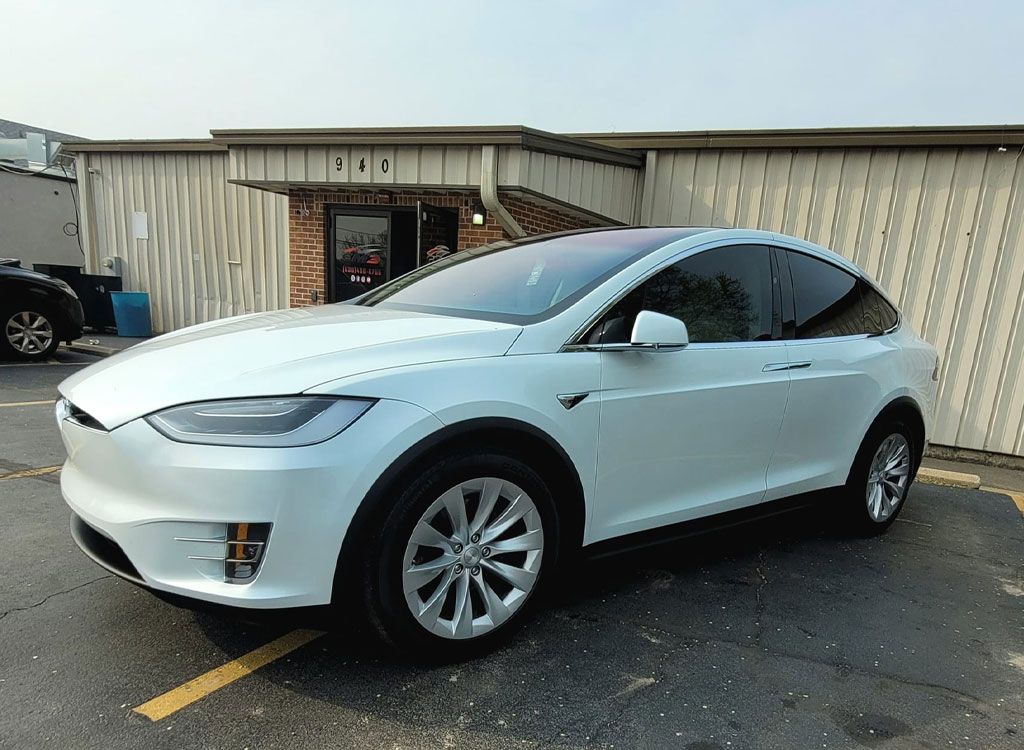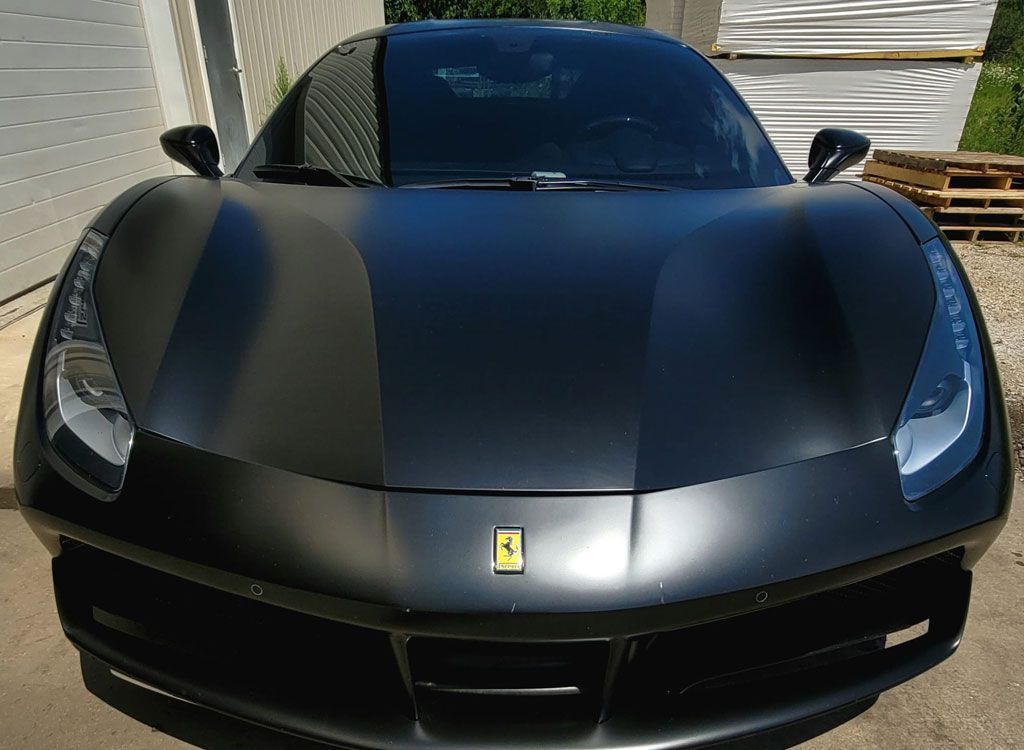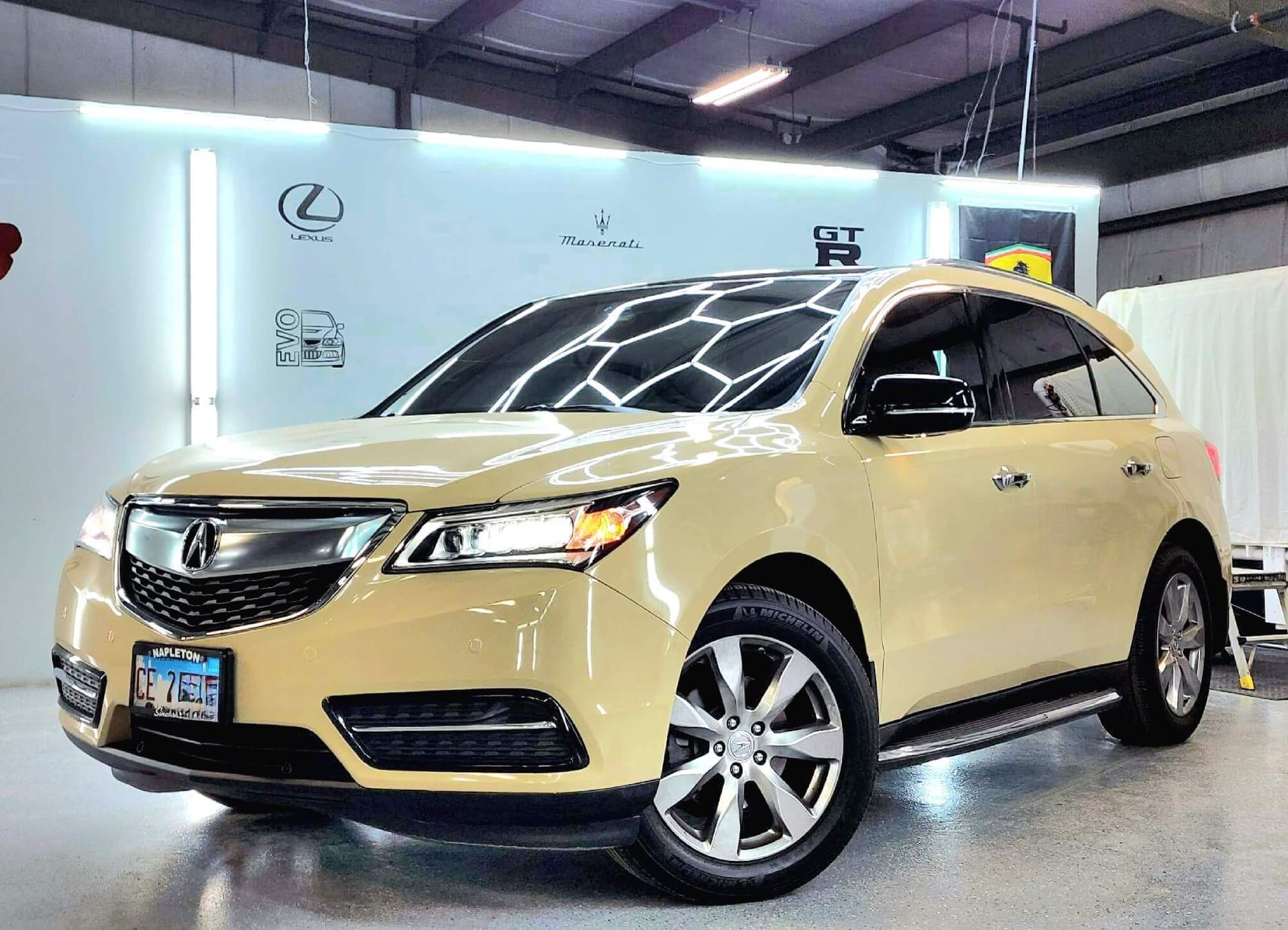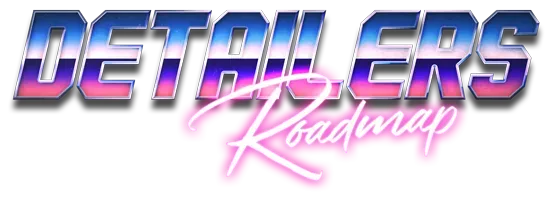How PPF Enhances the Resale Value of Your Vehicle: Protect Your Investment
When it comes to owning a vehicle, one of the biggest concerns for many drivers is how to maintain its value over time. You might spend a lot of money on your car, and seeing it lose value due to scratches and paint damage can be disheartening. That's where Paint Protection Film (PPF) comes into play. This incredible product not only keeps your car looking new but also significantly boosts its resale value. In this article, we'll explore how investing in PPF can safeguard both your car's exterior and your wallet, ensuring that when the time comes to sell or trade in your vehicle, you’ll get the best possible return on your investment.
PPF enhances the resale value of your vehicle by preserving its exterior condition and protecting it from scratches, chips, and other damages that can deter potential buyers. A well-maintained paint job without visible wear and tear can result in an increase of $1,000 to $2,000 in resale value, making this investment worthwhile for many vehicle owners.
The Concept of Paint Protection Film (PPF)
Paint Protection Film (PPF) is a remarkable innovation in automotive care. This clear, adhesive layer adheres to a vehicle's exterior surfaces, acting like a shield against the daily wear and tear that can cause unsightly damage. Most commonly crafted from a durable type of urethane film, it provides a protective barrier without altering the car's original beauty or color. Imagine stepping out on a rainy day and noticing the raindrops glistening on your car's surface with no worry about scratches; that’s PPF at work.
The roots of PPF trace back to military applications during the Vietnam War, where it was designed to protect helicopter blades from debris. Its evolution into civilian life has led to its rise as an essential accessory for car owners who treasure their vehicles. Many automotive enthusiasts now consider it an indispensable part of vehicle maintenance, akin to regular oil changes or tire rotations in terms of proactive care. But why should you invest in PPF? Here are some fascinating advantages you might want to consider.
Advantages of PPF
Beyond simply looking good, PPF serves multiple practical purposes. When expertly applied, it guards against rock chips and minor abrasions that can occur on highway drives or country roads. What sets PPF apart from other protective coatings is its self-healing capability; minor scratches can simply vanish when exposed to heat from the sun or even the warmth of your hand. This unique elasticity allows the film to absorb impacts without compromising your vehicle's aesthetic appeal.
Additionally, the film provides exceptional UV resistance, protecting the underlying paint job from fading and oxidation over time. The result? Your vehicle maintains its showroom shine long after you take it off the lot. The peace of mind provided by knowing your car is safeguarded from outside forces often outweighs any initial hesitations regarding cost—it’s an investment in future value. Furthermore, it's useful to know about different types of PPF available on the market as you contemplate your options.
Types of PPF
- Clear PPF: This is the most popular version and blends seamlessly with your car’s paint, preserving the original color and finish.
- Matte PPF: For those seeking a unique look, matte PPF adds a sophisticated matte finish while still providing robust protection.
- Colored PPF: Less common but equally appealing for some owners, colored films allow for personalization, changing your vehicle's appearance while serving as a protective layer against dings and scratches.
With this knowledge of PPF's benefits and types, a deeper evaluation awaits—examining whether the installation costs align with your investment goals.
Evaluating Cost vs. Benefits
The initial costs associated with applying PPF can seem overwhelming to many vehicle owners, especially when you see numbers ranging from $500 for basic coverage to upwards of $2,000 for full protection. However, understanding the long-term advantages helps paint a clearer picture of its value. A well-maintained exterior not only looks good, but it also helps retain a higher market value, which can greatly outweigh the installation costs.
- Short-Term Costs: Let's break it down further to understand what we are paying for. For those opting for partial coverage—typically on high-impact areas like the hood, fenders, and mirrors—you might spend around $1,000. This is reasonable considering those sections endure the most wear and tear from road debris. On the other hand, if you want comprehensive protection that wraps your entire vehicle, expect to invest between $5,000 and $8,000. While these figures may initially appear steep, they pave the way for substantial savings. Investing in PPF isn't merely about preventing scratches; it's about preserving your investment.
- Long-Term Benefits: Now, let’s consider the long-term benefits that can arise from this investment. By preventing damage from chips, scratches, and fading caused by UV rays, PPF helps alleviate the headache of frequent repairs. In fact, over a typical five-year ownership period, vehicle owners can save between $1,700 and $3,000 in maintenance costs alone through reduced touch-ups and less need for repainting.
When comparing immediate financial output with future potential savings, the decision becomes clearer. Each dollar spent today on PPF translates into longer intervals without costly repairs; this means less time worrying about how your vehicle appears and more time enjoying it. These cost considerations naturally lead to another critical factor for many car owners: understanding how enhanced protection can influence the overall value of their vehicle over time and why it's crucial to apply it early in your vehicle's lifespan.
Impact on Resale Value
The condition of a vehicle’s exterior often serves as the first impression for potential buyers. If they spot chips, scratches, or fading paint, it can lead to an immediate devaluation of 10-15% off the asking price. In this context, PPF emerges as a vital shield, minimizing these risks and keeping your car looking pristine.
- Enhanced Aesthetic Appeal: One of the most compelling advantages of PPF lies in its ability to sustain a vehicle’s showroom finish. By creating a barrier against everyday wear—such as stone chips from gravel roads, scratches from overzealous shopping carts, and harmful UV rays that can dull color—PPF protects the car’s paint job. This means when it comes time to sell or trade in your vehicle, you present a car that is not just functional but also visually appealing. A well-maintained exterior does more than please the eye; it elevates curb appeal significantly. Think about it: when potential buyers see a vehicle that looks brand new regardless of its age, they're more inclined to assume that the rest of the car has been cared for similarly. This perception can lead to quicker sales and potentially higher offers.
- Financial Impact: Now let’s talk numbers because they make everything clearer. Studies indicate that a well-preserved paint job can raise a vehicle’s resale value by anywhere between $1,000 to $2,000 compared to similar cars showing signs of wear and tear. Imagine investing $439 in PPF installation for your 2025 AWD Limited Sienna; this relatively modest expense could translate into thousands more come resale time. Furthermore, owners have seen tangible financial benefits. One satisfied car owner described how his vehicle wrapped in PPF sold for $2,000 more than comparable models lacking such protection. This real-life story supports the idea that those who opt for paint protection are not just spending money aimlessly but instead making a wise investment that pays dividends down the road.
Applying paint protection film isn’t merely about aesthetics or maintenance; it's a strategic decision aimed at maximizing long-term value and ensuring your vehicle remains an attractive option for future buyers. Understanding how these protection methods differ highlights what makes each unique, paving the way for informed choices when it comes to safeguarding your investment.
PPF vs. Other Protection Methods
When it comes to safeguarding your vehicle’s paint, PPF is often positioned as the front-runner, but it’s by no means the only option. Many car enthusiasts grapple with the decision of whether to go for a high-tech solution like PPF or stick with time-tested methods such as ceramic coatings or traditional wax. Each method has its unique attributes, and understanding them can help you make an informed choice regarding your vehicle care regimen.
Ceramic Coatings
Let’s start with ceramic coatings. These products have surged in popularity due to their glossy finish that’s hard to beat, along with exceptional hydrophobic properties—they repel water quite effectively! This makes washing your vehicle less of a chore since dirt and grime have a tougher time adhering to the surface. However, despite their appeal, ceramic coatings fall short when it comes to physical protection. They can resist minor scratches but are not equipped to handle impacts from rocks or debris—a scenario where PPF excels. In essence, while you’ll enjoy a stunning shine with ceramic coatings, your paint won't have the robust protective layer that PPF provides.
Car Wax
Next up is traditional car wax. Many car lovers have fond memories of spending weekends applying this glossy product to enhance their vehicle's appearance. Waxing does indeed add a beautiful, reflective shine and offers some UV protection against sunlight degradation. However, there’s a catch: wax requires frequent reapplications—often every month or so—to remain effective. Furthermore, when it comes to defending your vehicle against physical damage like chips or scratches, wax simply cannot compete. It’s akin to putting a lovely film of frosting on a cake without considering what lies beneath; it may look good momentarily but offers little substance underneath.
Vinyl Wraps
Finally, we arrive at vinyl wraps. These colorful coverings allow for significant customization in aesthetic appeal—they can completely change your vehicle’s look while providing some level of protection from minor abrasions. However, vinyl wraps are generally less durable than PPF; they can peel and may not withstand environmental factors as effectively over extended periods. They serve more as a stylistic choice than a long-term protective measure when compared to the sturdiness of PPF.
With all these options distinguishing themselves through unique benefits and limitations, the next consideration is how to properly maintain the protective features of your chosen solution for optimal performance.
Tips for Maintaining PPF
To keep your Paint Protection Film (PPF) looking pristine, gentle care goes a long way. Regular maintenance not only prolongs the life of the film but also enhances your car's appearance. A good habit is to wash your vehicle every two weeks or so, especially if you frequently drive on roads that kick up debris or encounter harsh weather conditions.
- Washing Techniques: When washing, opt for a pH-neutral car shampoo as it won’t damage the film. It's best to hand wash your vehicle using a soft sponge or microfiber mitt. High-pressure washers can be tempting for a quick clean; however, they can lift and peel the edges of your PPF if not used carefully. Instead, use gentle circular motions, treating your vehicle as if it were a delicate piece of art. After rinsing with water, dry your car with a clean microfiber cloth to prevent any water spots from forming.
- Avoid Harsh Chemicals: Here’s where caution is key: abrasive cleaners, strong solvents, and degreasers may seem effective at removing dirt, but they can weaken or discolor the film. It’s crucial to check cleaning products for compatibility with PPF before use. Products labeled as safe for automotive finishes are generally reliable choices. By opting for milder cleaning solutions, you'll protect the integrity of your film over time. Remember: Your car deserves pampering just as much as its driver—keep it clean and gleaming with this thoughtful maintenance.
- Additional Protective Measures: Beyond just cleaning, consider applying a ceramic coating over the PPF for added protection against UV rays and environmental pollutants. This step not only makes cleaning easier but also enhances the film’s longevity by providing an extra layer against fading and staining. Moreover, avoid parking under trees whenever possible; falling sap and tree resin can create stains that are challenging to remove without damaging the PPF.
Investing time into these routines helps ensure that your investment in PPF distributes benefits not just in aesthetics but also in preserving value over time. As we move forward, let's take a closer look at how to make an informed choice when selecting protective films for your vehicle.
Selecting the Best PPF for Your Car
When you embark on the journey of choosing a PPF, it helps to know what factors are most important. With countless options on the market, not all films are created equal, and understanding these distinctions can save you time and money in the long run.
Brand Reputation
One of the first considerations should be the brand you choose. Well-established brands come with a reputation built on performance and durability. Investing in renowned brands may seem pricier at first, but their proven track record gives you peace of mind. These companies have invested years into research and development to create films that resist yellowing, cracking, and staining while offering an aesthetically pleasing finish. Choosing a reputable brand is often associated with higher-quality materials that last. Once you’ve narrowed it down to reliable brands, the next crucial step involves installation.
Professional Installation
The importance of having your PPF installed by certified professionals cannot be overstated. A meticulous installation process ensures that there are no bubbles or peeling edges. Poorly applied PPF often leads to compromised protective qualities, which can waste your investment. Certified installers have training and experience specific to applying PPF correctly; they ensure a seamless application that enhances both protection and appearance. In many cases, professional installations also come with warranties that cover defects or complications stemming from the installation process. The effectiveness of the film largely relies on how well it’s installed," a professional installer remarked during a demonstration session I attended. Their hands-on approach illustrated just how precise the process needs to be. As you consider installation, don’t forget about warranties; they play a significant role in protecting your investment further.
Warranty Considerations
When evaluating different PPF products, opting for those that offer warranties of 5-10 years can significantly enhance your investment's security. A solid warranty provides reassurance as it speaks volumes about the manufacturer's confidence in their product’s durability. Additionally, it provides you with recourse should any issues arise within the warranty period. Research shows that films backed by robust warranties tend to perform better over time and resist environmental damage more effectively.
With these insights in mind—the brand’s reputation, professional installation, and warranty considerations—you'll be well-equipped to select the best PPF for your vehicle—one that genuinely enhances its longevity and resale value. In summary, investing in quality PPF not only protects your vehicle but also preserves its value for future resale opportunities. Make informed decisions to get the best results for your investment!
Premium Paint Protection Film Installation in Elgin, IL
Shield your vehicle's paint from chips, scratches, and road debris with the precision of CM3 Detailing Studio & Ceramic Coating’s paint protection film services. Our expertly installed films provide an invisible layer of defense that maintains your car’s original beauty while enhancing durability. Whether you’re driving daily or showing off your ride, our tailored solutions ensure your vehicle stays protected in any condition. Secure your paint’s longevity today with CM3’s professional paint protection film installation in Elgin, IL.









